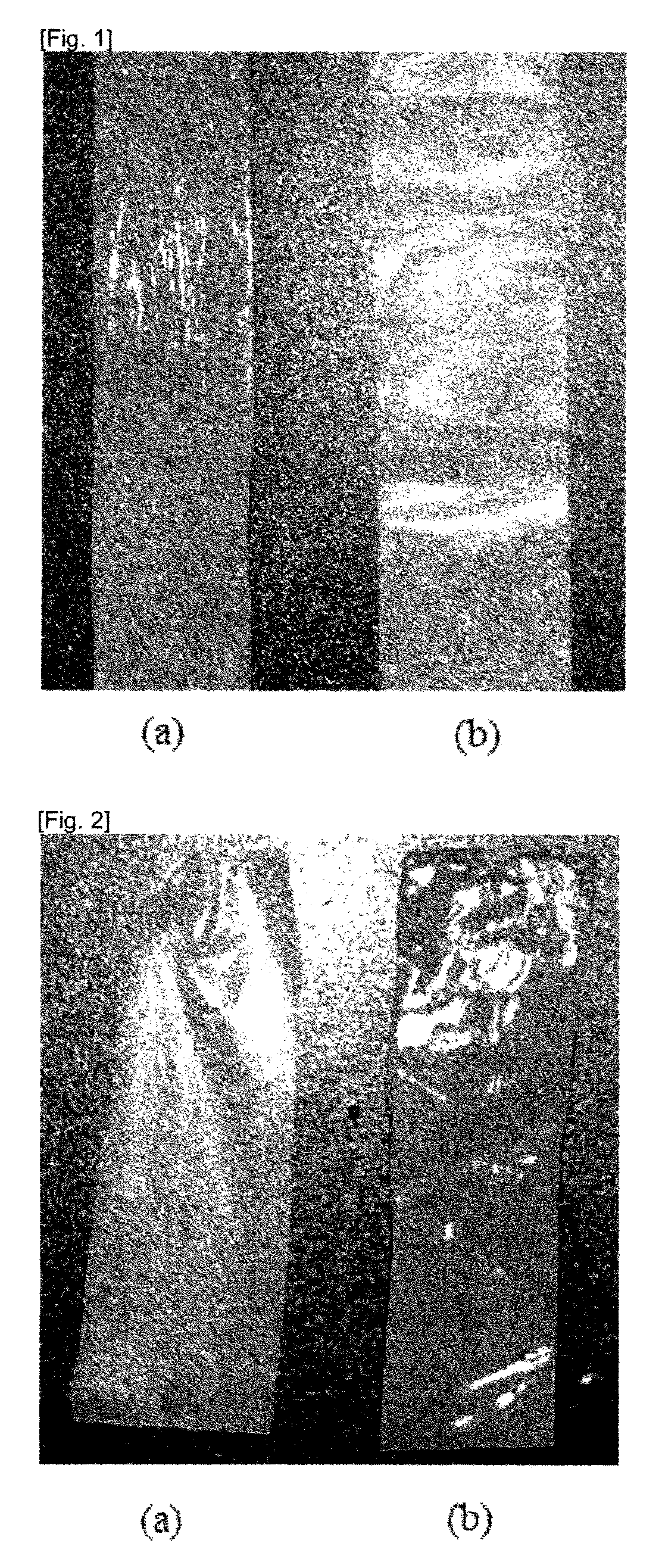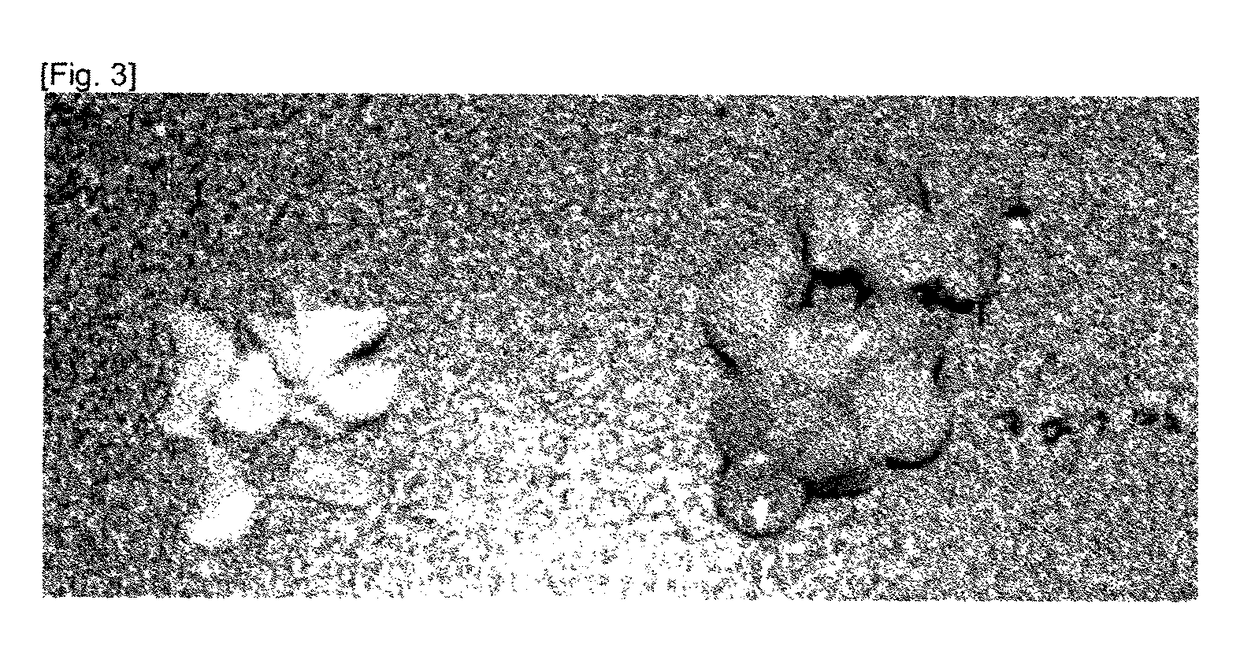Method for producing dried bio cellulose
a bio-cellulose and bio-cellulose technology, applied in the direction of plant/algae/fungi/lichens ingredients, pharmaceutical non-active ingredients, toilet preparations, etc., can solve the problems of time required to gel dry bio-cellulose, difficult to use this bio-cellulose for industrial purposes, and fungi or bacteria can be contaminated, so as to reduce the transport and production costs of dry bio-cellulose
- Summary
- Abstract
- Description
- Claims
- Application Information
AI Technical Summary
Benefits of technology
Problems solved by technology
Method used
Image
Examples
example 1
n 1 of Dry Bio-Cellulose
[0035]100 g of a mandarin gel, produced according to the disclosure of Korean Patent Application No. 2010-0085634 (entitled “Method for preparing cellulose gel using novel Gluconacetobacter sp. strain isolated from mandarin juice; developed by the Korean Rural Development Administration), was dewatered in a centrifuge for 10 minutes. The dewatered mandarin gel was soaked or immersed in a solution of 25 ml of 1,3-butylene glycol in 75 ml of distilled water at room temperature for 1 minute or more such that 1,3-butylene glycol was sufficiently absorbed into the mandarin gel. The mandarin gel was dried in a dryer for 2 hours to prepare a dry bio-cellulose. During drying, the bio-cellulose was supported on nonwoven fabric or a mesh-type plastic plate such that air and water could move.
example 2
n 2 of Dry Bio-Cellulose
[0036]100 g of the same mandarin gel as described in Example 1 was dewatered in a centrifuge for 10 minutes. The dewatered mandarin gel was soaked or immersed in a solution of 25 ml of glycerol in 75 ml of distilled water at room temperature for 1 minute or more such that glycerol was sufficiently absorbed into the mandarin gel. The mandarin gel was dried in a dryer for 2 hours to prepare a dry bio-cellulose. During drying, the bio-cellulose was supported on nonwoven fabric or a mesh-type plastic plate such that air and water could move.
example 3
n 3 of Dry Bio-Cellulose
[0037]100 g of the same mandarin gel as described in Example 1 was dewatered in a centrifuge for 10 minutes. The dewatered mandarin gel was soaked or immersed in a solution of 25 ml of propylene glycol in 75 ml of distilled water at room temperature for 1 minute or more such that propylene glycol was sufficiently absorbed into the mandarin gel. The mandarin gel was dried in a dryer for 2 hours to prepare a dry bio-cellulose. During drying, the bio-cellulose was supported on nonwoven fabric or a mesh-type plastic plate such that air and water could move.
PUM
| Property | Measurement | Unit |
|---|---|---|
| temperature | aaaaa | aaaaa |
| size | aaaaa | aaaaa |
| length | aaaaa | aaaaa |
Abstract
Description
Claims
Application Information
 Login to View More
Login to View More - R&D
- Intellectual Property
- Life Sciences
- Materials
- Tech Scout
- Unparalleled Data Quality
- Higher Quality Content
- 60% Fewer Hallucinations
Browse by: Latest US Patents, China's latest patents, Technical Efficacy Thesaurus, Application Domain, Technology Topic, Popular Technical Reports.
© 2025 PatSnap. All rights reserved.Legal|Privacy policy|Modern Slavery Act Transparency Statement|Sitemap|About US| Contact US: help@patsnap.com


